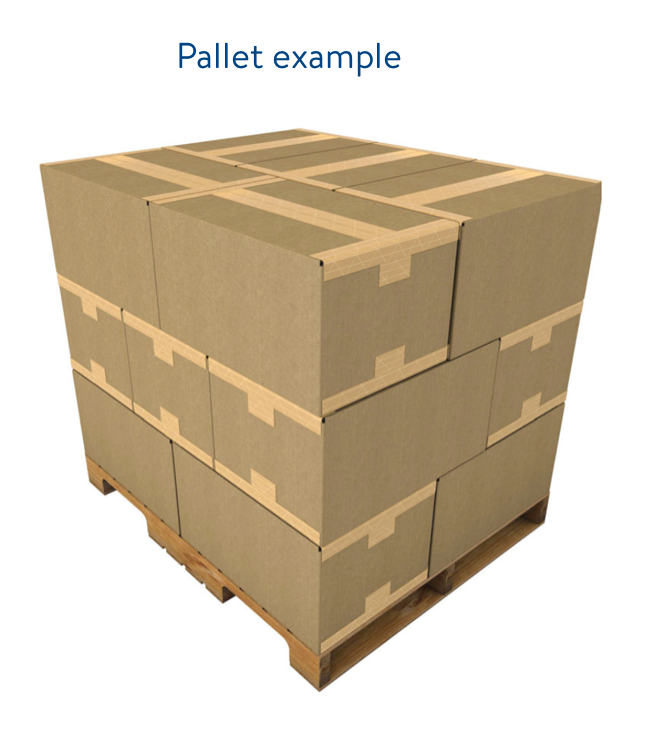Ship Point Management Terminology
As you view and manage lead times, calendars, and closures in your supply chain network, below are common terms you'll see and what they mean.
General
Term | Definition |
Supplier ID (aka Vendor 6, 6-digit Vendor Number) | The 6-digit number used to identify a supplier in Walmart systems. |
9-digit agreement (aka Vendor 9, 9-digit Vendor Number) | The 9-digit number, which consists of the 6-digit vendor number, 2-digit department number, and 1-digit sequence number (for suppliers with more than one agreement in a department).  |
Ship Points
Term | Definition |
Collect | An agreement between Walmart and a supplier where Walmart will schedule and pay for transportation of the product from a ship point to a Walmart destination. |
Lane | Describes a connection between a single supplier ship point and a Walmart destination.
|
Load Sheets | Documents provided by Walmart Transportation that indicate which purchase orders should be loaded on specific trailers to ship to Walmart. |
Pallet | A structure (usually wood or plastic) that holds a supplier’s shipping product, usually in a layered configuration.  |
Prepaid | An agreement between Walmart and a supplier where the supplier will schedule and pay for transportation of the product from a ship point to a Walmart destination. |
Receiving Hours of Operation | The time period within which a supplier can accept a purchase order from Walmart. |
Ship Point | A supplier-managed facility from which the product is shipped to Walmart. |
Ship Point Type / Freight Terms | Terms for a lane regarding which entity (Walmart or a supplier) pays for transportation. In the U.S., this value can either be Collect or Prepaid. |
Shipping Hours of Operation | The time period within which a supplier can ship the product from their ship point. |
Third-Party Logistics (often abbreviated as 3PL) | An agreement between a supplier and another party, where the other party ships the supplier’s product together with other suppliers’ product to Walmart. |
Destinations
Term | Definition |
DC (i.e., Distribution Center) | A Walmart-managed facility that distributes product to other Walmart facilities.
|
DC Type / Network Type | A group of Walmart DCs that serve a similar group or group(s) of products.
|
Destination | A Walmart-managed facility that receives product from suppliers. |
FC (i.e., Fulfillment Center) | A Walmart-managed facility that distributes product to customers ordering through Walmart’s eCommerce platforms. |
Trucks and Deliveries
Term | Definition |
Constraint (Value) | A numerical value that determines the minimum or maximum limits for a single truck on a lane. |
Constraint Type | A unit of measure for a constraint.
|
Destination Pool | One or more lanes that have their orders grouped to ship on the same truck to the same destination (usually a consolidation facility).
|
Max Value | The maximum constraint value per truck.
|
Min Value | The minimum acceptable constraint value per truck that Walmart’s replenishment systems tries to order to. |
Vendor Pool | One or more Vendor 9s/9-digit supplier numbers that have their orders grouped to ship on the same lane from the same ship point.
|
Calendars and Overrides
Term | Definition |
Available | A day of the week that a supplier could accept an order, but Walmart does not currently review.
|
Calendar | A schedule for when Walmart reviews orders for a supplier. This is built from a combination of a “default” weekly order pattern, factoring in overrides (such as holidays, operational shutdowns, and other changes). |
Calendar Override | A temporary change to a supplier’s order pattern to address holidays or other operational shutdowns. |
Delivery Pattern | The days of the week a supplier should expect purchase orders to arrive at a Walmart destination, based on the order pattern, processing time, and transit time. |
Event | A set of overrides applied on a date or a series of sequential dates for one or more lanes. |
In-transit Days / Transit Time | The number of days between when an order is expected to ship and when an order is expected to arrive at a Walmart destination.
|
Lead Time | The total number of days from order generation to Must Arrive By Date (MABD).
|
Order Pattern (aka DoW, Days of Week) | The days of the week in which Walmart’s replenishment systems review forecasted demand and current inventory and may place an order.
|
Preferred | A day of the week that Walmart will review a supplier’s forecast and inventory for an order.
|
Processing Days / Time | The number of days between when an order is generated and when the order is expected to ship.
|
Ship Pattern | The days of the week that a supplier should expect to ship purchase orders, based on the order pattern and processing time. |
Ship Point ID | A user-defined name for a supplier ship point. |
Unavailable | A day of the week that a supplier cannot accept an order:
|